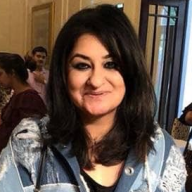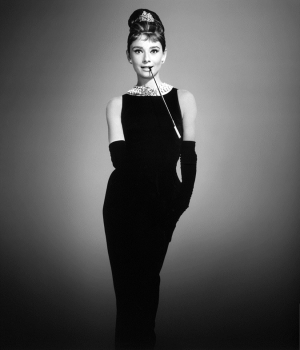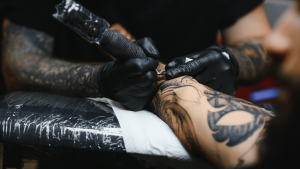Located in Boston’s Back Bay throughout its ninety-year history, The School of Fashion Design — a private nonprofit studio arts school, licensed by the Commonwealth of Massachusetts, Division of Occupational Licensure, Office of Private Occupational School Education — educates students in the full fashion design process, from creation and innovation to comprehensive technical expertise.

Image: School of Fashion Design Boston
The School of Fashion Design is a fully licensed studio school offering a two-year certificate and a three-year diploma in Fashion Design. Students may elect to complete the Certificate in Fashion Design on a full or part time basis. Full-time students are required to take at least four courses each semester to complete the program in two years while part-time students typically take one-three courses per semester.
Per WWD: ‘Committed as the school is to the artistry of handcrafted garments and apparel, the school added computerised design decades ago, and is now offering 3D design, has updated some of the ways professional development has changed, and added online classes. Looking ahead to the next ten years, the vocational certificate program will remain the school’s core, but workshops for fashion and design enthusiasts, and home sewers, are being offered to build the community.’
History

Image: The School of Fashion Design Boston
Over ninety years of experience affords The School of Fashion Design a unique perspective and expertise in providing a comprehensive and competitive fashion education. The originally-named Modern School of Applied Art first opened its doors in 1934 during the Great Depression and on the cusp of the golden age of Hollywood.
In 1936 Mrs. Isobel Sinesi joined the faculty and expanded the curriculum to include fashion design. Mrs. Sinesi served the School first as an instructor, then in 1952 as Director, and finally as Director Emerita from 1978-1997. The School of Fashion Design persevered through World War II. In the Sixties, Bobby-soxers, American Bandstand and poodle skirts were trending.
So was the idea of specialisation, or a concentration in one area of applied art training. As a response to the changing economy and workforce demands, The School was reorganised as a non-profit corporation in 1955 and renamed the Modern School of Fashion Design. The operation moved to Boston’s “fashion-way” on Newbury Street in 1956, and has since concentrated exclusively on training in fashion design.
The student body of the Sixties witnessed Flower Power, Space Race, Civil Rights Movement and Camelot – the legendary Kennedy years in the White House. In 1967, the Directors renamed the School The School of Fashion Design. The following year, it was relocated to its own permanent building at 136 Newbury Street. Annie Hall, Disco and Women’s Lib defined the Seventies, while the 80’s were all about excess with shows like ‘Dallas’ and ‘Dynasty’ dominating the airwaves. The Nineties marked ‘The End of Fashion’ with grunge and anti-fashion trends. The new millennium brought an opportunity for innovation in technology, fabric, and manufacturing with performance fashion.
Today, The School of Fashion Design is the only educational institution in Massachusetts dedicated to the study of fashion design. Additionally it has had a long history of welcoming international students, particularly to the two-year certificate program, which is a great option for anyone seeking to complete their education in a short time period.
Program Highlights

Image: The School of Fashion Design Boston
Fundamentals Of Textiles trains students in the identification, analysis and testing of fibers and fabrics with a focus on their uses, suitability and care in apparel. Students also learn about weaves, knits, dyeing, printing, and finishes. Projects include the design of original textiles.
Couture Detail focuses on the principles and techniques in fine hand and machine decoration, trim, and self-trim. Students learn finishes that give design the fine look of haute couture. Students design and construct an assigned basic garment using the techniques of faggoting, piping, scalloping, beading, embroidery, appliqué, cut-out, hemstitching, buttons, frogs, fringe and lace.
French Draping introduces students to the art and skill of draping, creating three dimensional patterns with muslin on the dress form, draping in the traditional French style. The resulting toile is used as the pattern, which requires basic pattern-making skills to perfect the original drape into a pattern. A full compliment of skirts, dresses, bodices and sleeves are demonstrated in this course and the student will design and produce two of their own designs during this semester.
History of Costume foundation lecture course is a survey of the history of costume from antiquity through the present day, focusing on sources of inspiration for contemporary fashion design as well as theatrical costuming. Special attention is paid to the fabrics, colors, styles, cultural impact, and psychology associated with garments and accessories throughout each period.
Millinery Design specialty studio course explores sources of inspiration, design process, construction and detailed finishing of patterned, blocked or framed headwear. Shoe Design specialty studio course introduces students to the foot and shoe anatomy, the materials and processes involved in shoe design, creating patterns, sketching footwear, and footwear branding. Students will create portfolio-ready presentations that showcase hand rendered shoe designs, mood images and specification sketches of their shoe designs.
Related Content:
Notable Alumni

Image: The School of Fashion Design Boston
The School of Fashion Design in Boston has a legacy of producing alumni who have made significant contributions to global fashion. Several graduates have established themselves as fashion designers, stylists and entrepreneurs, leaving a mark on couture and ready-to-wear. Menswear designer Joseph Abboud is acclaimed for combining traditional craftsmanship with modern design. Boston and New York-based apparel designer Kavya Prakhyati Khandavalli was featured as Boston’s Next Generation Designer upon graduation.
“Currently, I conceptualise and create custom garments for clients and collaborate with local artists to make intricate custom pieces. Some of my garments have appeared on the magazine covers like The Praze Magazine and The Portrait Project,” she says.
Alumni Laura Bremen got her first design job at luxury fashion brand, Ralph Lauren. “After graduating from SFD, I wondered how I would stand out in the crowd of design graduates. But after I got my first design job at Ralph Lauren, I realised I was the one who stood out! I was a step ahead of everyone, well-respected, and my opinion valued because of the skills I learned at SFD. I appreciate all that I learned at SFD and the time spent on pattern-making and construction of real garments. Companies don’t pay you to only come up with creative ideas. In the real world they just want you to understand how to make a great pair of pants!”
Ashley Stambouli is a womenswear fashion brand established in 2018 by alumni and Venezuelan designer Ashley Stambouli who specialises in crafting bridesmaids dresses, bridal gowns, and couture creations. Channa Pope debuted her menswear-inspired fashion line at Boston Fashion Week in 2014, earning recognition as “Breakout Designer”. Candice Wu has showcased at the Museum of Fine Arts Boston, the Peabody Essex Museum, Boston Symphony Orchestra, M.I.T Museum, and Boston City Hall. She received a Certificate of Recognition from Boston Mayor Thomas M. Menino, a Boston Fashion Award in 2012 and 2013, and the M.I.T. Descience Project “People’s Choice” award in 2014.
Per WWD: ‘With New Balance, Puma, TJX Cos., Tracksmith, Wolverine Worldwide and other brands with corporate headquarters or major Boston hubs, some alumni have stayed local to work. The city has a “remarkably robust” costume design job market for costuming for film and television — due partially to Boston’s tax incentives for the film industry, Leclerc said. Alumni fall into three camps job-wise — working for large corporations, in costume design or in their own start-ups.’
The School Of Fashion Design, Boston announce Jennifer Leclerc as Executive Director
The School of Fashion Design’s Board of Trustees recently announced the promotion of Associate Director Jennifer Leclerc as its next Executive Director. Leclerc, an arts and education leader, succeeds Executive Director Jim Hannon, who will remain in the new role of Director of Operations and Compliance. The announcement is being made amid the School of Fashion Design’s ninetieth anniversary year as New England’s only educational institution focused solely on fashion education and training.
“The board was unanimous in our support for Jennifer; she and Jim have always worked collaboratively, complementing each other’s skills for the benefit of SFD,” says board chair Dr. Susan Lane. “Jim’s early leadership brought us firmly into the twenty-first century. Jennifer has had an impact on all aspects of the School during her time here. She led development of a new strategic plan, which the board recently ratified and which will guide us into exciting new initiatives. As SFD embarks on this next chapter, Jennifer’s leadership marks a focus on innovation and growth, maintains the school’s focus on inclusiveness, and continues the school’s legacy of stability and excellence.”
“It’s an exciting time for an educational organisation that specialises in creative professional-level training,” says Leclerc. “For more than nine decades the School of Fashion Design has reimagined, reoriented and reinvented itself as the needs of its industry and its students changed, while remaining committed to teaching the time-honored skills of a quality hand-crafted garment. I see the future of SFD as one that continues to welcome committed professional-track students from throughout New England, trains them impeccably, and launches them into their creative careers. But I also see new opportunities for the School where fashion enthusiasts, individual makers and others can access our teaching expertise to learn new skills. Our region is full of wonderfully creative people, companies, and potential new partners.”
FAQS For Students Applying to the School of Fashion Design, Boston
What academic qualifications are required for admission?
Applicants typically need a high school diploma. Some programs may also require a minimum GPA.
What is the importance of a portfolio in the application process?
A strong portfolio showcasing creativity, technical skills, and originality is critical. Include sketches, designs, and any relevant projects.
Are there any specific deadlines for application submissions?
Yes, application deadlines vary by program and semester. Check the official website for updated deadlines and apply early.
What financial aid options are available for students?
The school offers scholarships, grants, and work-study programs. Applicants should also explore federal and private financial aid options.
What are the key facilities and resources provided to students?
Students have access to state-of-the-art studios, sewing labs, fabric libraries, computer labs, and industry-standard software.
Does the school provide internship or placement opportunities?
Yes, the school partners with leading fashion houses and brands to offer internships and career placements as part of the curriculum.
What housing options are available for students?
While the school may not have on-campus housing, it provides resources to help students find nearby accommodation.
What extracurricular activities enhance the learning experience?
Students can participate in fashion shows, workshops, design competitions, and industry events to gain practical exposure.
What is the class size and student-to-faculty ratio?
The school offers small class sizes to ensure personalised attention and mentorship from faculty.
Are there opportunities for international students?
Yes, the school welcomes international applicants and provides visa support, cultural integration programs, and language assistance if needed.
Read More:
Top fashion institutes in the world

Jasmeen Dugal is Associate Editor at FashionABC, contributing her insights on fashion, technology, and sustainability. She brings with herself more than two decades of editorial experience, working for national newspapers and luxury magazines in India.
Jasmeen Dugal has worked with exchange4media as a senior writer contributing articles on the country’s advertising and marketing movements, and then with Condenast India as Net Editor where she helmed Vogue India’s official website in terms of design, layout and daily content. Besides this, she is also an entrepreneur running her own luxury portal, Explosivefashion, which highlights the latest in luxury fashion and hospitality.










